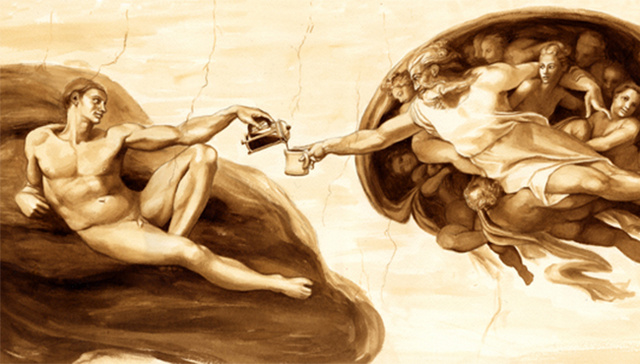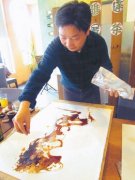The custom of drinking coffee varies from country to country in the world.

The custom of coffee in northern Europe and continental Europe is that the coffee brewed has no sediment, light and round; the beans are roasted brown; the way of brewing is drip or machine, all kinds of coffee changed by Espresso, such as ─ cappuccino, Viennese coffee, French milk coffee and so on.
The custom of coffee in the Middle East is embodied in its obsession with the basic way of drinking. Coffee beans are roasted to the depths of darkness, then ground into a very fine powder, boiled several times and then added sugar to produce coffee that is extremely thick, bitter, sweet and precipitate. people will sip this coffee in an elegant and polite manner.
The custom of coffee in southern Europe and urban Latin America is to drink a cup of coffee in the morning, afternoon and evening, preferring deep-roasted, half-bitter, half-sweet and scorched coffee. Favorite Espresso machine brewed coffee, dark, rich, the upper layer floating foam, with a little bit of precipitation at the bottom of the cup. In the morning, mix coffee and hot milk in a bowl or large cup, hold the bowl or cup in both hands, warm your palms with the heat of coffee or feel the aroma of coffee with your nostrils, and even hope to jump into the bowl or cup to take a bath; in the afternoon or evening, southern Europeans prefer to use small cups (about 1x4 of the bowl used in the morning), black, full-bodied, bitter and sweet coffee.
In order to reduce the cost and meet the demand at any time, American coffee usually boils the whole pot of coffee and puts it on a heat preservation plate to keep warm, and the coffee is very light. Typical North American coffee drinkers have regarded coffee as a daily drink, drinking coffee from the coffee pot all day in the office and carrying coffee at any time when doing housework, not only after meals, but also at the beginning and middle of the day.
The custom of coffee in English-speaking countries is that milk and sugar are added to the coffee. Because the coffee is relatively light, milk and sugar often affect the concentration and original taste of the coffee. During World War II, this coffee custom became popular in North America.
Important Notice :
前街咖啡 FrontStreet Coffee has moved to new addredd:
FrontStreet Coffee Address: 315,Donghua East Road,GuangZhou
Tel:020 38364473
- Prev

Painting with red wine and coffee is chic and creative
Lin Jinda paints with drinks such as red wine and coffee, which is chic and creative. Reporter Zhang Jiale / Photography "Wow, Mr. Lin paints with red wine and coffee." Lin Jinda, director of the 99 Fine Arts Society of Caotun Town, painted with various drinks such as black tea, red wine and coffee at the exhibition of the Qingshui compound Restaurant in Nantou City yesterday, attracting a lot of onlookers. Lin Jinda is holding bamboo chopsticks or spoons and dipping them on.
- Next

World Coffee History Ethiopian Shepherds find Red Coffee fruits
In the sixth century, Ethiopian shepherds discovered red coffee fruits. In the eleventh century, Arab merchants spread coffee to Europe. In the 16th century, Franz Geora Kolschitzky, a Viennese, established the first coffee shop in Europe. He also started the trend of drinking coffee with milk. In 1554, coffee in Istanbul became black gold, and it was very popular with Ethiopian shepherds in the sixth century.
Related
- How did the Salvadoran coffee industry develop in Central America?
- What exactly does the golden cup extraction of coffee mean?
- The Origin of Coffee flower
- [2023 Starbucks World Earth Day] there are more meaningful things besides free Starbucks coffee!
- What kind of coffee is there in Spain? 9 Flavors of Spanish Coffee
- Aromatic African coffee| Kenya's coffee culture and historical production area
- Liberica Coffee Bean knowledge: the characteristics of Liberian Coffee beans of the three original species of Coffee beans
- The origin and formula of Spanish latte introduces the taste characteristics of Bombon coffee in Valencia, Spain.
- How to adjust the solution of over-extracted coffee
- What is the tasting period of coffee beans? What is the period of coffee and beans? How should coffee wake up and raise beans?

